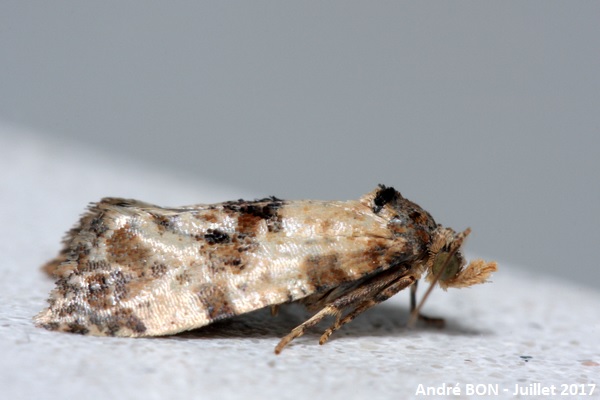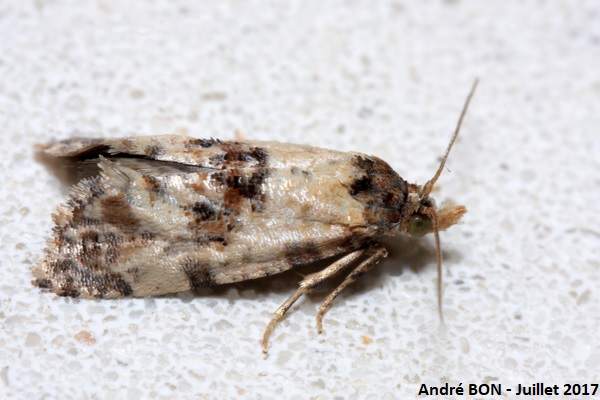

| Ox-tongue Conch (Cochylis molliculana (Zeller, 1847)) |


|
|
Scientific name: Cochylis molliculana (Zeller, 1847) Common name: Ox-tongue Conch Other names: Sometimes also listed with a new genus name as Neocochylis molliculana. French name: Order: Lepidoptera Suborder: Microlepidoptera Family: Tortricidae Subfamily: Tortricinae Wingspan: 11-15 mm. Biotope: Dry meadows, grassy slopes, railway surroundings, waste lands with presence of the host plant. Geographic area: South of Europe, from the Iberian Peninsula to Croatia, France and Great Britain. Flight time: April to September. Number of generations : 2 Caterpillar: Host plant: Bristly Ox-tongue (Picris echioides). |
The Ox-tongue Conch shows golden brown head, labial palps and thorax with a few blackish markings. The fore wings' ground colour is creamy white with some patches varying from reddish brown to grey or ochre. The costal edge is marked with blackish brown with larger square-shaped antemedian and median spots. The median area bears irregular brown markings with some blackish patches, better marked on the upper side. The marginal area also shows some brown and blackish markings. The hind wings are pale brown. There are several similar species with a possible confusion. The Black-headed Conch (Cochylis atricapitana) has a black head (English common names are sometimes enough ;-). The White-bodied Conch (Cochylis hybridella) has a white head and thorax. The Little Conch (Cochylis dubitana) has also a white head but with a blackish thorax. The Marbled Conch (Eupoecilia angustana) is white on the upper side of the head, the fore wings' median band is clearly better marked and the marginal area bears a broad dark border. |
| [To know more about the Ox-tongue Conch] [Next picture] [Top] |

|
The golden brown colour of the head and labial palps can clearly be seen on this picture. |
| [To know more about the Ox-tongue Conch] [Previous picture] [Top] |

|
Upper side view. The weekly marked median band and the lack of a dark marginal area are enough to discard the Eupoecilia angustana species. |